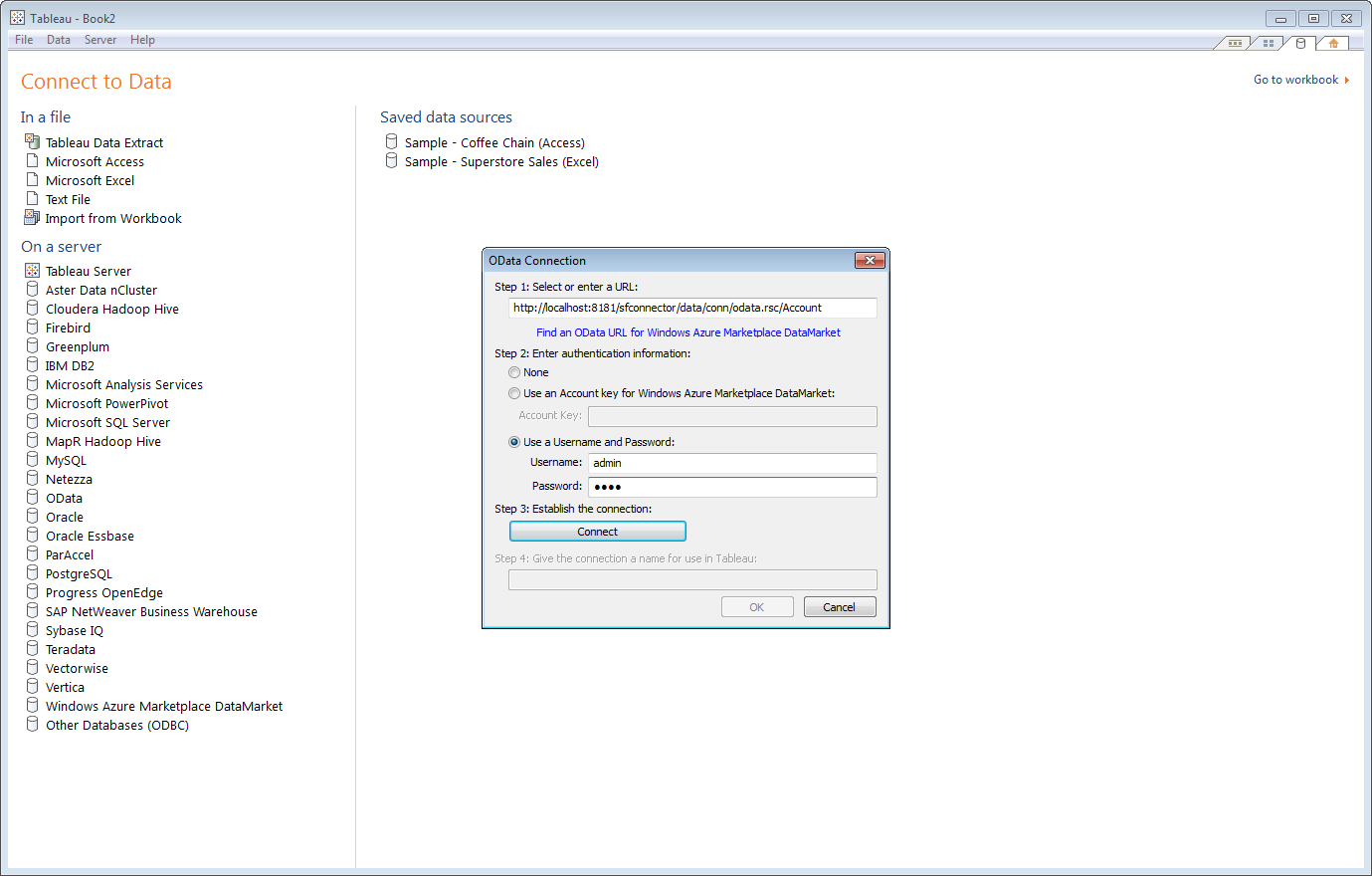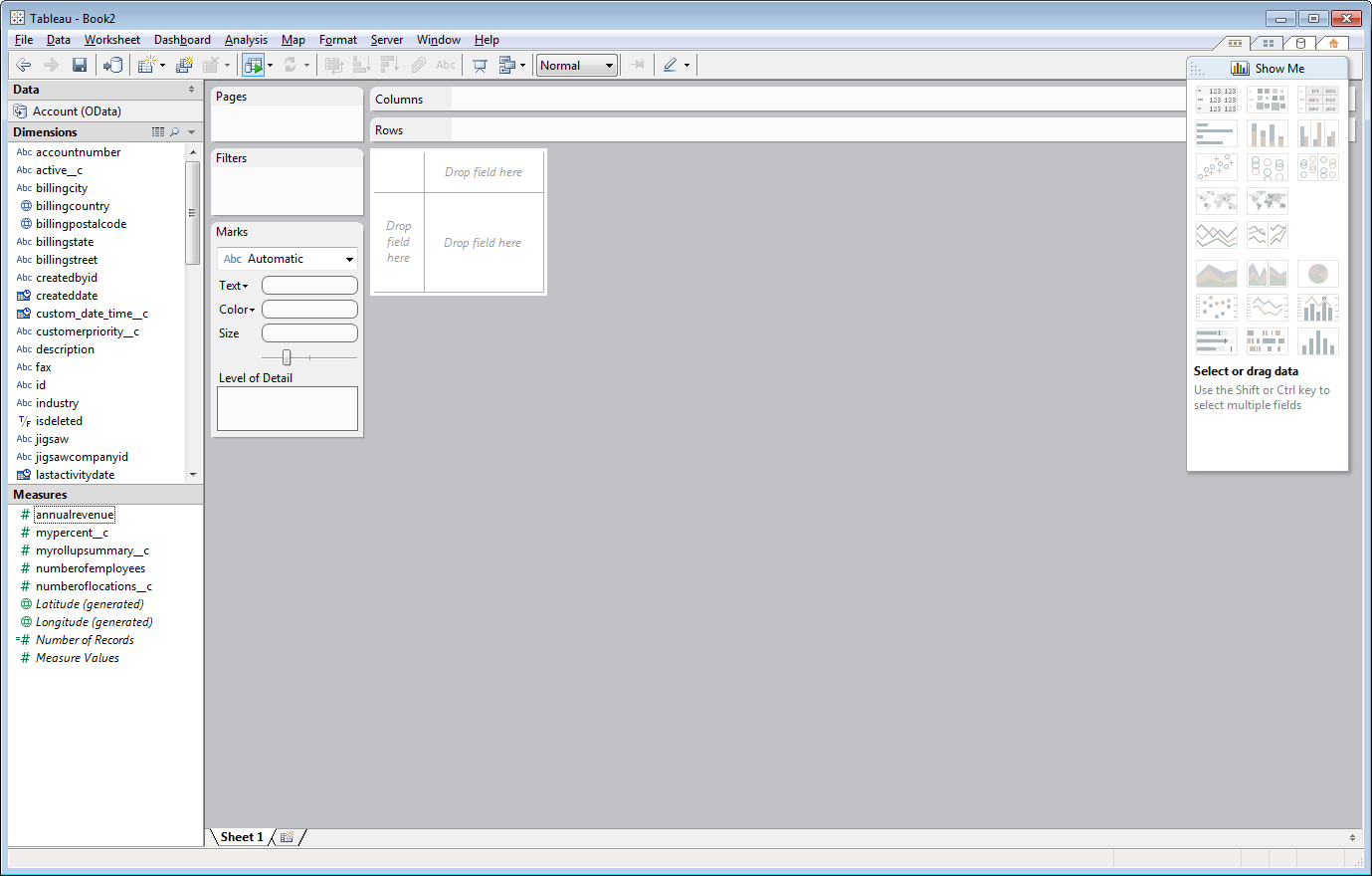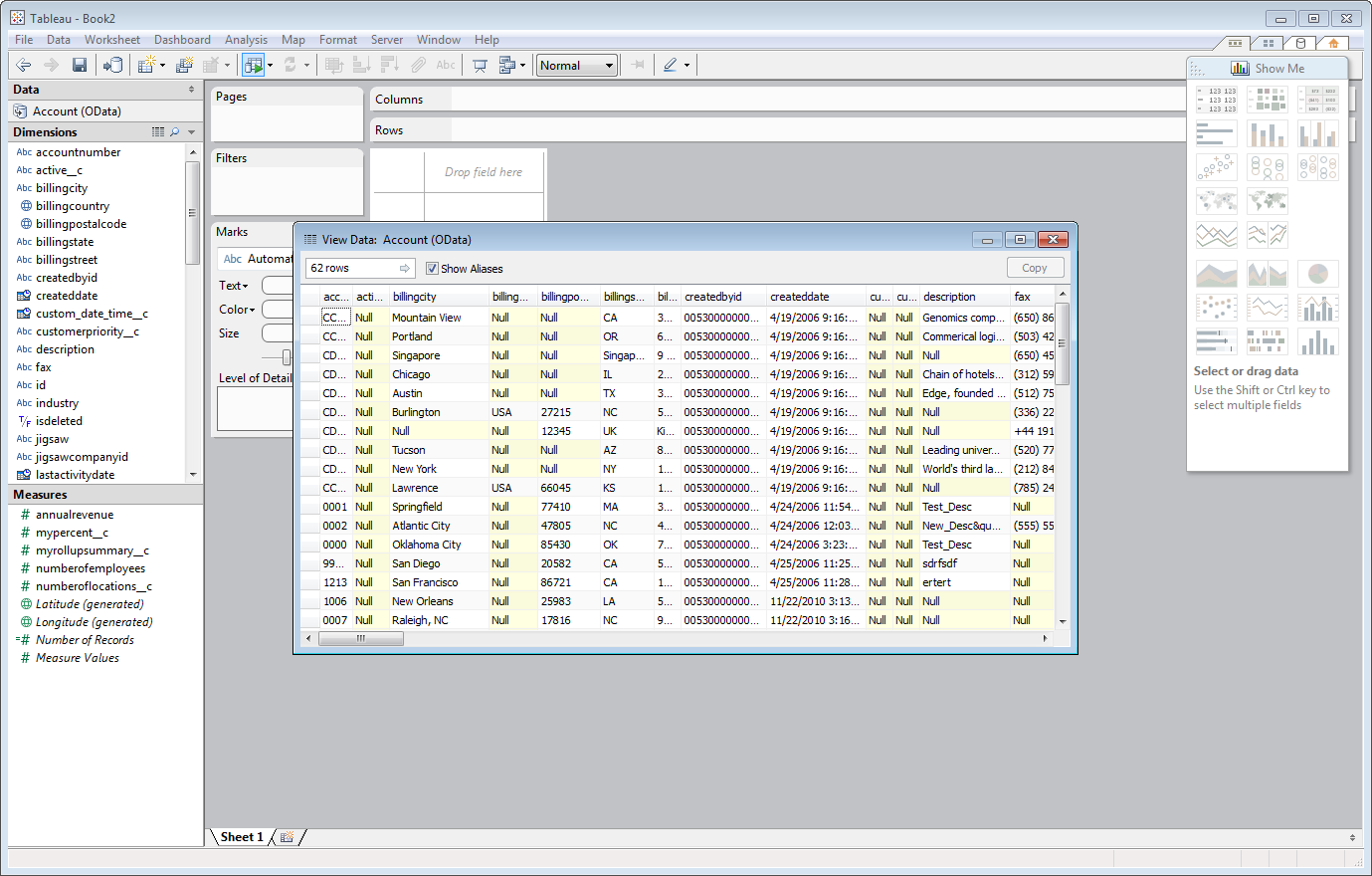Model Context Protocol (MCP) finally gives AI models a way to access the business data needed to make them really useful at work. CData MCP Servers have the depth and performance to make sure AI has access to all of the answers.
Try them now for free →Access SAP Data as OData Feeds in Tableau
Use the Tableau Desktop business intelligence tool to connect to SAP data using the API Server.
The CData API Server, when paired with the ADO.NET Provider for SAP (or any of 200+ other ADO.NET Providers), provides SAP data as OData Web services. This article will explain how to use the API Server to provide the underlying connectivity to SAP data in Tableau's business intelligence tool.
About SAP Data Integration
CData provides the easiest way to access and integrate live data from SAP. Customers use CData connectivity to:
- Access every edition of SAP, including SAP R/3, SAP NetWeaver, SAP ERP / ECC 6.0, and SAP S/4 HANA on premises data that is exposed by the RFC.
- Perform actions like sending IDoc or IDoc XML files to the server and creating schemas for functions or queries through SQL stored procedures.
-
Connect optimally depending on where a customer's SAP instance is hosted.
- Customers using SAP S/4HANA cloud public edition will use SAP NetWeaver Gateway connectivity
- Customers using SAP S/4HANA private edition will use either SAP ERP or SAP NetWeaver Gateway connectivity.
While most users leverage our tools to replicate SAP data to databases or data warehouses, many also integrate live SAP data with analytics tools such as Tableau, Power BI, and Excel.
Getting Started
Set Up the API Server
Follow the steps below to begin producing secure SAP OData services:
Deploy
The API Server runs on your own server. On Windows, you can deploy using the stand-alone server or IIS. On a Java servlet container, drop in the API Server WAR file. See the help documentation for more information and how-tos.
The API Server is also easy to deploy on Microsoft Azure, Amazon EC2, and Heroku.
Connect to SAP
After you deploy the API Server and the ADO.NET Provider for SAP, provide authentication values and other connection properties needed to connect to SAP by clicking Settings -> Connections and adding a new connection in the API Server administration console.
The Java edition supports connecting to an SAP system using the JCo .jar file. See the "Getting Started" chapter in the help documentation for information on using the Jco JAR file.
The Windows edition supports connecting to SAP systems using either the librfc32.dll, the librfc32u.dll, NetWeaver, or Web Services (SOAP). Set the ConnectionType connection property to CLASSIC (librfc32.dll), CLASSIC_UNICODE (librfc32u.dll), NETWEAVER, or SOAP.
Note: We do not distribute the librfc32.dll or other SAP assemblies. You must find them from your SAP installation and install them on your machine.
All versions of Sync support connecting to an SAP system using Web services (SOAP). If you are using the SOAP interface you must enable SOAP access to your SAP system and set the Client, RFCUrl, SystemNumber, User, and Password properties, under the Authentication section. Additionally, set the ConnectionType to SOAP.
See this guide on obtaining the connection properties needed to connect to any SAP system.
When you configure the connection, you may also want to set the Max Rows connection property. This will limit the number of rows returned, which is especially helpful for improving performance when designing reports and visualizations.
You can then choose the SAP entities you want to allow the API Server to access by clicking Settings -> Resources.
Additionally, click Settings -> Server and set the Default Format to XML (Atom) for compatibility with Tableau.
Authorize API Server Users
After determining the OData services you want to produce, authorize users by clicking Settings -> Users. The API Server uses authtoken-based authentication and supports the major authentication schemes. Access can also be restricted based on IP address; by default only connections to the local machine are allowed. You can authenticate as well as encrypt connections with SSL.
Create Real-Time SAP Data Visualizations
Follow the steps below to create data visualizations based on the remote SAP data:
-
In Tableau, select 'Connect to data'. In the 'On a server' section, click OData.

-
In the resulting wizard, enter the URL of the OData endpoint for the API Server. Append the name of the table you want to access to the OData entry URL. For example:
https://your-server/api.rsc/MARA -
Select the
'Use a Username and Password' option and enter the username and password of a user who has access to the API Server.

-
Tableau uses the table metadata exposed by the API Server to detect dimension and measure columns.

-
To view the SAP data, right-click under the table name in the Data section of the dashboard and select the View Data option. The SAP data will appear in Tableau.

